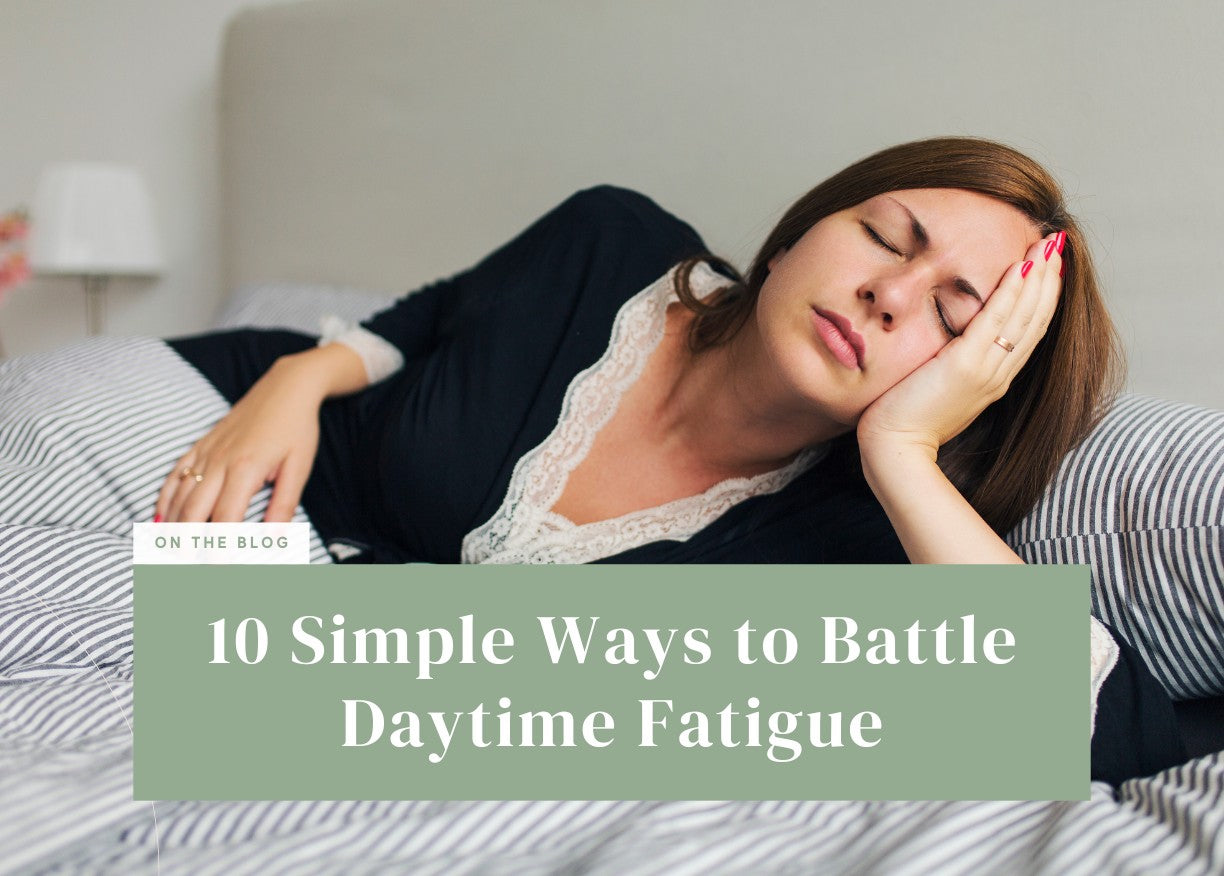10 Simple Ways to Battle Daytime Fatigue
You got sleep. Or at least you thought you did.
But by mid-morning, you're yawning. By mid-afternoon, you're dragging.
And no matter how many times you blink, stretch, or sip something caffeinated, your brain just won’t wake up.
Daytime fatigue is one of the most common complaints among adults—and it’s not always because of a bad night’s sleep. Sometimes it’s about how you live, eat, move, and manage your energy throughout the day.
Here are 10 research-backed, energy-boosting tips to help you feel more awake and alert—no energy drinks required.
1. Get Bright Light First Thing in the Morning

Your brain needs natural light to fully “wake up.” Morning sunlight resets your internal clock and boosts cortisol at the right time.
✅ Step outside within 30 minutes of waking—even for just 5–10 minutes.
Bonus: it helps you sleep better later, too.
2. Ditch the Snooze Button

Each time you hit snooze, you confuse your brain and enter another sleep cycle you won’t finish. The result? Grogginess that lasts for hours.
✅ Set your alarm for the time you actually need to get up—and get out of bed.
3. Rehydrate Immediately

Fatigue is often just mild dehydration. After 7–8 hours without water, your body’s running on empty.
✅ Start your morning with a full glass of water before coffee or food.
4. Eat a Protein-Rich Breakfast

Skip the sugar crash. Protein helps stabilize blood sugar and gives you longer-lasting energy.
✅ Try eggs, Greek yogurt, chia seed pudding, or a protein smoothie with fiber.
5. Get Moving (Even a Little)

You don’t need a full workout to wake up your body—just movement.
✅ Try 2 minutes of jumping jacks, a short walk, or 10 air squats to get your blood flowing and your brain firing.
6. Schedule Tasks Based on Energy Peaks

Most people have natural energy highs between 9–11 a.m. and again in the early evening.
✅ Save your hardest work for those windows—and use low-energy times for lighter tasks like emails or errands.
7. Time Your Caffeine Strategically

Caffeine is best used after your natural cortisol spike, not during it.
✅ For most people, the sweet spot is between 9:30 and 11:30 a.m.—not right after waking up, and not late in the afternoon when it can affect sleep.
8. Take a 20-Minute Power Nap (The Right Way)

Short naps can restore alertness and boost memory—but only if timed right.
✅ Nap between 1–3 p.m., set an alarm for 20 minutes, and avoid sleeping longer (which can leave you groggy).
🌿 Extra tip: Try your nap on a Honey Hybrid Organic Mattress—the breathable, medium-support feel helps your body reset faster.
9. Avoid the Blood Sugar Crash

A high-carb lunch = a sleepy afternoon.
✅ Add healthy fats (avocado, nuts) and protein to balance your meals and prevent the dreaded 3 p.m. slump.
10. Upgrade Your Sleep Setup at Night
You may not realize it, but fragmented, shallow sleep—even if you spend 8 hours in bed—leads to next-day fatigue. The biggest culprit? A mattress that doesn’t support your body, or bedding that disrupts your temperature.
✅ The Honey Hybrid Organic Mattress, bamboo sheets, and plant-based pillow from Sweet Zzz create a cool, aligned, toxin-free sleep environment that helps you get true rest—not just time in bed.
Final Thoughts: Daytime Energy Starts the Night Before
Beating fatigue isn’t just about what you do during the day—it starts with how well you sleep at night.
But with a few smart habits, better timing, and a supportive sleep setup, you can stop feeling like you’re dragging through your day—and start feeling sharp, clear, and energized again.





